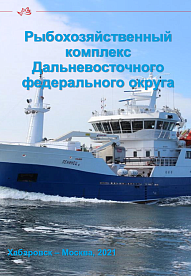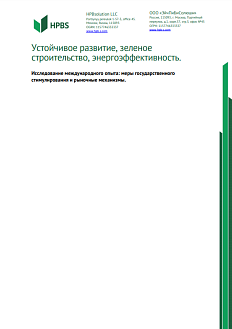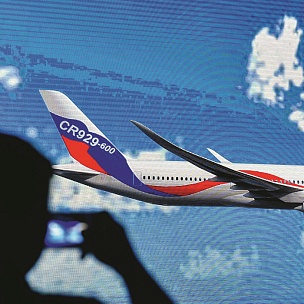The publication by the Federal Autonomous Scientific Institution «Eastern State Planning Center» (FANU Vostokgosplan) contains detailed information about the state of the fishing industry in the Russian Far East in 2021.
The Roscongress Foundation presents the salient points of the publication accompanied by fragments of broadcasts of relevant panel discussions from the business programme of international events held by the Roscongress Foundation.
The Far East dominates Russia’s fishing industry.
At year-end 2020, the district’s share of harvested aquatic biological resources, including aquafarming in the Far Eastern basin, reached 73.8% of all-country totals. The total catch in Russia in 2020 was 5 million tons (2.8% of global volumes), of which aquafarming accounted for 5.9%.
At year-end 2021, total allowable catch (TAC) increased by 2% in the country while recommended volumes increased by 15%. In 2021, the Far Eastern Federal District traditionally took the leading position in the country in terms of main quotas (96.1% historical, 78.8% investment, and 71.4% investment crab quotas). The bulk of the catch is formed by seven fish products: pollock, Pacific herring, cod, commander squid, Far Eastern flounder, crab, and navaga.
The leaders in terms of catch in 2017–2020 were Kamchatka Krai (43%), Primorsky Krai (22%), Sakhalin Oblast (20%), and Khabarovsk Krai (12%).
Notably, the percentage of underused catch quotas in the Far East in 2020 was lower than the all-country average (10% against 13%).
There are barriers to the development of the Far East’s fishing industry, such as the challenging economic conditions and the necessity of modernizing the fishing fleet.
The Far East’s fishing fleet faces a range of challenges. On the one hand, it is of vast size and shows good possibilities for investment. It comprises 70% of Russia’s total fishing fleet. Between 2017 and 2020, the organizations of the Far Eastern Federal District received RUB 104.9 bn in investments in capital assets (66.9% of all-country totals). Of these, 74.6% were channeled into the development of fishing and 24.8% into fish processing, while investments in aquafarming were below 1%. As part of the «investment quotas» programme, 14 fish processing plants are to be built in the next few years, of which 9 are already in operation in Kamchatka, Primorsky Krai, and Sakhalin Oblast.
On the other hand, the average age of fishing vessels in the Far East is 31.3 years, which is 1.6 years higher than all-country average. For 92% of vessels the statutory service life is already exceeded.
The current refrigeration capacity stands at 155.1 thousand tons, while one-time requirement reaches 800 thousand tons (a deficit of 80%). Also, there is a geographical imbalance, with 86.1% of refrigeration facilities located in Primorsky Krai.
Another important thing is that the Far Eastern Federal District lags behind the all-country average in terms of profit per worker in fishing (1.1-fold difference) and in aquafarming (threefold difference), which is explained by high volumes of fish products exports to APAC countries at reduced prices and the unprofitability of aquafarming in the Far Eastern Federal District.
Gain more insights about the fishing industry and the development of the Russian Far East in the Far East, Fishing industry, and Environment sections of the Roscongress Information and Analytical System.





